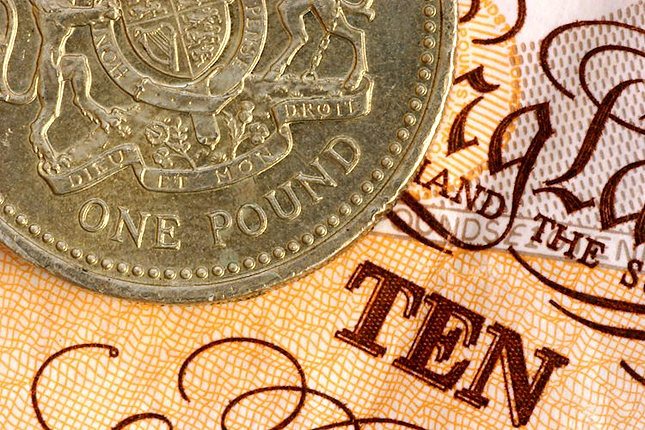- USD/CHF edges lower to near 0.8440 in Tuesday’s Asian session.
- The US Dollar remains under pressure amid dovish Fed.
- Economists see the SNB cut rates by another quarter-point cut on September 26.
The USD/CHF pair trades in negative territory for the fourth consecutive day around 0.8440 during the early European session on Tuesday. The rising expectation that the US Federal Reserve (Fed) will cut a larger interest rate at its upcoming monetary policy meeting on Wednesday weighs on the US Dollar (USD). Ahead of the key event, the US Retail Sales for August are due on Tuesday.
The USD traded near the lowest levels of the year in the previous session as markets are betting on an outsized rate cut by the Fed. Fed Chair Jerome Powel said last month at the Jackson Hole that inflation had come under control just enough for the Fed to finally feel comfortable dialing back policy.
The Federal Reserve is widely anticipated to cut the interest rate at its September on Wednesday, the first time in four years. Investors will also take more cues from interest rate projections, known as the "dot plot”. The expectation of aggressive rate cuts might continue to undermine the Greenback in the near term.
On the Swiss front, economists forecast the Swiss National Bank (SNB) will lower rates by another quarter-point cut on September 26, Markets are now pricing in a roughly one-in-three chance, up from zero just a month ago, per Bloomberg. Meanwhile, the ongoing geopolitical tensions in the Middle East could boost the safe-haven demand, benefitting the Swiss Franc (CHF). Israeli Prime Minister Benjamin Netanyahu said on Sunday that Yemen's Houthis will pay a "heavy price" after a missile fired by the group landed in central Israel, according to the BBC.
Swiss Franc FAQs
The Swiss Franc (CHF) is Switzerland’s official currency. It is among the top ten most traded currencies globally, reaching volumes that well exceed the size of the Swiss economy. Its value is determined by the broad market sentiment, the country’s economic health or action taken by the Swiss National Bank (SNB), among other factors. Between 2011 and 2015, the Swiss Franc was pegged to the Euro (EUR). The peg was abruptly removed, resulting in a more than 20% increase in the Franc’s value, causing a turmoil in markets. Even though the peg isn’t in force anymore, CHF fortunes tend to be highly correlated with the Euro ones due to the high dependency of the Swiss economy on the neighboring Eurozone.
The Swiss Franc (CHF) is considered a safe-haven asset, or a currency that investors tend to buy in times of market stress. This is due to the perceived status of Switzerland in the world: a stable economy, a strong export sector, big central bank reserves or a longstanding political stance towards neutrality in global conflicts make the country’s currency a good choice for investors fleeing from risks. Turbulent times are likely to strengthen CHF value against other currencies that are seen as more risky to invest in.
The Swiss National Bank (SNB) meets four times a year – once every quarter, less than other major central banks – to decide on monetary policy. The bank aims for an annual inflation rate of less than 2%. When inflation is above target or forecasted to be above target in the foreseeable future, the bank will attempt to tame price growth by raising its policy rate. Higher interest rates are generally positive for the Swiss Franc (CHF) as they lead to higher yields, making the country a more attractive place for investors. On the contrary, lower interest rates tend to weaken CHF.
Macroeconomic data releases in Switzerland are key to assessing the state of the economy and can impact the Swiss Franc’s (CHF) valuation. The Swiss economy is broadly stable, but any sudden change in economic growth, inflation, current account or the central bank’s currency reserves have the potential to trigger moves in CHF. Generally, high economic growth, low unemployment and high confidence are good for CHF. Conversely, if economic data points to weakening momentum, CHF is likely to depreciate.
As a small and open economy, Switzerland is heavily dependent on the health of the neighboring Eurozone economies. The broader European Union is Switzerland’s main economic partner and a key political ally, so macroeconomic and monetary policy stability in the Eurozone is essential for Switzerland and, thus, for the Swiss Franc (CHF). With such dependency, some models suggest that the correlation between the fortunes of the Euro (EUR) and the CHF is more than 90%, or close to perfect.
Information on these pages contains forward-looking statements that involve risks and uncertainties. Markets and instruments profiled on this page are for informational purposes only and should not in any way come across as a recommendation to buy or sell in these assets. You should do your own thorough research before making any investment decisions. FXStreet does not in any way guarantee that this information is free from mistakes, errors, or material misstatements. It also does not guarantee that this information is of a timely nature. Investing in Open Markets involves a great deal of risk, including the loss of all or a portion of your investment, as well as emotional distress. All risks, losses and costs associated with investing, including total loss of principal, are your responsibility. The views and opinions expressed in this article are those of the authors and do not necessarily reflect the official policy or position of FXStreet nor its advertisers. The author will not be held responsible for information that is found at the end of links posted on this page.
If not otherwise explicitly mentioned in the body of the article, at the time of writing, the author has no position in any stock mentioned in this article and no business relationship with any company mentioned. The author has not received compensation for writing this article, other than from FXStreet.
FXStreet and the author do not provide personalized recommendations. The author makes no representations as to the accuracy, completeness, or suitability of this information. FXStreet and the author will not be liable for any errors, omissions or any losses, injuries or damages arising from this information and its display or use. Errors and omissions excepted.
The author and FXStreet are not registered investment advisors and nothing in this article is intended to be investment advice.
Recommended content
Editors’ Picks

EUR/USD struggles below 1.0500, awaits key US data
EUR/USD keeps its range trade intact below 1.0500 in the European morning on Wednesday. Traders prefer to stay on the sidelines, awaiting a series of US economic data, including the high-impact PCE inflation data for placing fresh directional bets on the pair.

GBP/USD holds higher ground above 1.2550 ahead of US PCE inflation data
GBP/USD trades on a stronger note above 1.2500 in Wednesday's early European session. The pair remains underpinned by a sustained US Dollar weakness and a negative shift in risk sentiment as traders turn cautious ahead of top-tier US data releases.

Gold price sticks to modest intraday gains, bulls seem cautious ahead of US PCE data
Gold price builds on the overnight bonce from the $2,600 neighborhood, or a one-week low and gains some follow-through positive traction for the second straight day on Wednesday.

Ripple's XRP sees decline as realized profits reach record levels
Ripple's XRP is down 6% on Tuesday following record profit-taking among investors as its percentage of total supply in profit reached very high levels in the past week.

Eurozone PMI sounds the alarm about growth once more
The composite PMI dropped from 50 to 48.1, once more stressing growth concerns for the eurozone. Hard data has actually come in better than expected recently – so ahead of the December meeting, the ECB has to figure out whether this is the PMI crying wolf or whether it should take this signal seriously. We think it’s the latter.

Best Forex Brokers with Low Spreads
VERIFIED Low spreads are crucial for reducing trading costs. Explore top Forex brokers offering competitive spreads and high leverage. Compare options for EUR/USD, GBP/USD, USD/JPY, and Gold.